We Are the World: 10 Things You Didn’t Know
The 1985 American Music Awards made history for a few reasons. Lionel Richie won six awards, Prince took home three, and Michael Jackson was shut out. But that was just the opening act. Later that night, Richie, Jackson, and a number of other artists finished cutting a record that turned out to be a massive worldwide hit while throwing a focus on a humanitarian crisis. Here are 10 things you didn’t know, or maybe didn’t remember, about “We Are the World.”
1. It Followed the Lead of Band Aid.
“Do They Know It’s Christmas?” by Band Aid at Live Aid (Uploaded to YouTube by Live Aid 1985
The first big charity single of the 80s was “Do They Know It’s Christmas?” Released under a supergroup named Band Aid that was organized by Bob Geldof (of The Boomtown Rats and star of the film Pink Floyd’s The Wall) and Midge Ure, the song featured members of U2, Wham!, Culture Club, Duran Duran, and a number of other stars from the UK. Geldof would perform on “We Are the World” as part of the chorus and later organize Live Aid and Live 8 with Ure.
2. Harry Belafonte Provided the American Spark.
Belafonte had the notion to put together a similar charity record using the biggest stars in America. Belafonte pitched the idea to music manager Ken Kragen, who took the idea to his clients, Kenny Rogers and Lionel Richie. They brought in Stevie Wonder and producer Quincy Jones. Jones recruited Michael Jackson. By then, the momentum was unstoppable.
3. Michael Jackson and Lionel Richie Did the Writing.
The official video for We Are the World. (Uploaded to YouTube by USAforAfricaVEVO)
To record a charity song … you have to have the song. Richie and Jackson teamed up, working on it for a week. Jackson took a version to Jones and Richie that included instrumentation and a chorus. They ended up reaching their final version of the song on January 21, 1985. Recording began the next day at Lion Share Recording Studio, which was owned by Rogers. The final night of vocals with soloists and the group chorus was set for the A&M Recording Studios in Hollywood after the AMAs when everyone would be in one place and would be more easily assembled and managed.
4. Prince Was Supposed to Be There.
While accounts vary as to why Prince ultimately wasn’t involved, the original plan had been to feature a section with he and Michael Jackson trading parts with each other. One story goes that Prince had to bail overzealous bodyguards out of jail after the AMAs, an event that was later parodied on Saturday Night Live in a sketch featuring Hulk Hogan and Mr. T as the bodyguards and Billy Crystal as Prince. Regardless, Prince and the Revolution did contribute a separate song to the We Are The World album, a number titled “4 the Tears in Your Eyes.”
5. And Madonna Wanted to Be.
For her part, Madonna was just making her commercial breakthrough, having just hit #1 for the first time with “Like A Virgin.” Jackson invited her, but her management advised her to decline because she’d have to cancel dates on her “Virgin Tour.” The thought was that, as a somewhat new artist with a big fresh hit, she needed to stick to the plan. It ended up working out for her, as her next single “Material Girl,” hit #2, and “Crazy for You” would replace “We Are the World” at #1 later in the spring.
6. One Sign Solved a lot of Problems.
When the artists began to gather, they found a sign on the studio door that read, “Check your egos at the door.” It was a funny and humbling reminder that the group was gathered for a larger purpose. It must have worked; while there were individual debates about how to sing certain parts or conferences over how to deliver certain lines, the group worked together all night, completing the song by the following morning.
7. The Cast Represented Multiple Generations.
The assembled array of talent was pretty incredible and spanned a number of genres, styles, and decades. Belafonte and Ray Charles were something of the elder statesmen. Jackson, Wonder, Smokey Robinson, and Diana Ross were among those that came up at Motown in the 60s and early 70s. Bob Dylan was, well, Bob Dylan. Bruce Springsteen, Steve Perry, and Lindsay Buckingham, among others, represented the rock side, for example, while Rogers, Willie Nelson, and Waylon Jennings brought in the country. In all, more than 45 voices are heard on the track, with 21 having identifiable solo bits. The wide net led to some genuinely thrilling, unique moments, as when Dylan and Charles sing together.
8. Why in the name of the Blues Brothers was Dan Aykroyd There?
The way that Aykroyd himself tells the story, it was purely by accident. Though Aykroyd did have a music background as “Elwood Blues,” one half of The Blues Brothers with the late John Belushi, he basically wound up at the recording session by happenstance. Aykroyd was looking for a money manager and spoke to a talent manager that asked him if he wanted to join the group. So he did.
9. The Impact Was Immediate.
The single, credited to USA for Africa, hit stores in March; the initial pressing of 800,000 copies sold out in days. The single would go on to sell 8 million in the U.S. The song and the album would generate more than $75 million toward famine relief. The song has been updated at various times and used for other purposes, such as relief in Haiti.
10. The Impact Continues.
Pink Floyd reunited with Roger Waters at Live 8 for global action against poverty. (Uploaded to YouTube by Pink Floyd)
The one-two punch of Band-Aid and USA for Africa provided the launch-pad for Geldof’s Live Aid, the first of the mega-charity concerts; held in London and Philadelphia, it was broadcast to nearly 2 billion people on July 13, 1985. The “World” session also gave Willie Nelson the idea for Farm Aid, the concert series aimed at helping farmers in America.
Remarkably, the “World” song and album still generate money for the charity today. It kickstarted a wave of charitable projects as well. The contemporaneous “Tears Are Not Enough” by a similar Canadian supergroup called Northern Lights (which included Bryan Adams, Neil Young, Joni Mitchell, Anne Murray, and Geddy Lee of Rush, among others) was also included on the album. The heavy metal community put together their own famine-relief record, Hear’n Aid, the following year; it featured artists like Ronnie James Dio and members of Judas Priest, Quiet Riot, Motley Crue, and more, while boasting an ensemble of lead guitarists in addition to the vocalists. A wave of further singles continued throughout the 80s, targeted at a variety of issues. “That’s What Friends Are For” by Wonder, Dionne Warwick, Elton John, and Gladys Knight was a #1 hit for AmFAR (American Federation for AIDS Research), while “Sun City” by Artists United Against Apartheid brought together artists from rock, rap, punk, jazz, funk, Latin, and world music to shine a light on the problems in South Africa. Charitable singles still abound, with the most recent high-visibility project being Lil Dicky’s star-filled “Earth” from 2019.
Six Music Prodigies That Made it Big
Child Stars are nothing new. They say music is the universal language, and as long as music has been around, kids have understood its appeal as well as anyone.
Still, understanding is different from actually creating music. Some kids really were born to play. All of these stars were drawn to music at a young age–some as young as three-years-old. What makes these stars stand out is how they have adapted over the years, building legacies that lasted well beyond their young ambitions.
Wolfgang Amadeus Mozart
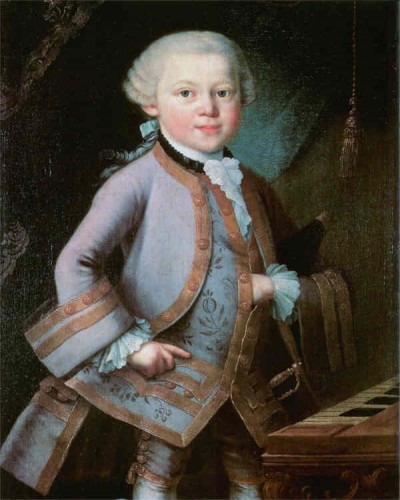
Wolfgang Amadeus Mozart, born 1756, might be the most fantastic child prodigy who ever lived. When his older sister began music lessons in 1759, a three-year-old Wolfgang looked on and began to play music on the clavier when he had the chance. At four his father began teaching young Wolfgang basic pieces, and at five Wolfgang composed his first original piece of music.
He went on to spend almost all of his youth, from the ages of seven through seventeen, on tour as a musical prodigy. At the age of 14 he visited Rome, heard Gregorio Allegri’s Miserere twice, and transcribed the piece from memory. The piece was forbidden from being copied – the Vatican only allowed it to be played in the Sistine Chapel, and even then only twice a year – and the Pope summoned Mozart to Rome upon hearing the young musician had published the work. But instead of punishing him, the Pope personally congratulated young Mozart for his musical genius, and even released the piece for publication. Not bad for a teenager.
At 17, Mozart began work as a court musician in Salzberg. A few years later he moved to Vienna, where he had one of the most successful careers in the history of music, composing operas such as The Magic Flute and Don Giovanni, as well as hundreds of symphonies, chamber pieces and other works. He died in 1791, leaving his famous Requiem Mass unfinished.
Stevie Wonder
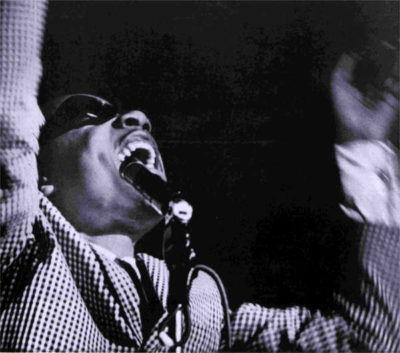
Stevie Wonder was already a multi-instrumentalist at 11 years old, when Ronnie White of the Miracles brought him him in to audition before Motown founder Berry Gordy. Gordy liked what he saw: ‘Little Stevie’ released his first two albums in 1962, and had his first major hit, the song “Fingertips”, in 1963.
The Post actually covered Stevie Wonder in October 1963, in an article on teen pop titled “The Dumb Sound” (Oops). When it comes to this ‘sound’, writer Alfred Aronowitz emphasizes uniqueness over straightforward, lyrical content:
The main gimmick on any pop record, in fact, is the sound. “That’s what the kids listen for,” says Dick Clark, who, as conductor of ABC-TV’s American Bandstand since 1957, has been in the business of helping to decide what the kids listen to. “The more different, the more original, the more unique the sound is, the more chance a record stands of becoming a hit.”
At the time, Stevie Wonder was riding high on the strength of “Fingertips”, which had reached the top of the Billboard Hot 100 that summer. He wasn’t the only young star around — the article mentions a number of other teenage or preteen contemporaries. But most have these have since been forgotten. Stevie Wonder, on the other hand, went on to record over 30 U.S. top ten hits.
Part of what made Stevie Wonder such a long-term success was that he kept innovating. As he got older, he kept adding elements of genres such as funk and jazz, while playing with new technologies that included synthesizers, talk boxes and sampling. It also helped that he wrote most of his own songs, and that he was a talented enough songwriter to come up with so many classics.
Michael Jackson
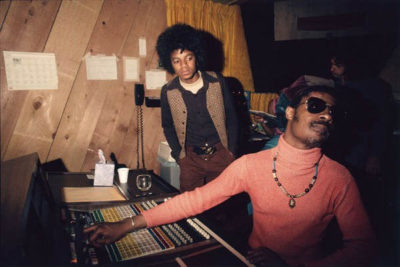
Michael Jackson remains one of the most well-known — and most complicated — child stars of our time. Like the others on our list, Michael Jackson got into music at an exceptionally early age. He joined his older brothers’ band as a backup musician at the age of six, and by the time he was eight he was sharing lead vocals with his brother Jermaine. The Jackson 5 had a string of number one hits in the 1960s, including classics such as “ABC” and “I Want You Back”.
Jackson actually learned a little from another name on this list: Stevie Wonder. Stevie Wonder describes meeting Michael Jackson when the singer was around ten years old:
He would always come into the studio curious about how I worked and what I did. “How do you do that? Why do you do that?” I think he understood clearly from seeing various people do the music scene that it definitely took work.
Michael Jackson continued his interest in Stevie Wonder’s recording techniques as both men developed as artists. When Stevie Wonder was making some of his greatest work in the 1970s, Jackson often sat in on his recording sessions:
I wanted to experience it all. So Stevie Wonder used to literally let me sit like a fly on the wall. I got to see Songs in the Key of Life get made, some of the most golden things.
Not too long after watching Wonder record Songs in the Key of Life, Michael Jackson released his solo breakthrough, Off the Wall. Like Stevie Wonder, Michael Jackson began writing his own songs and integrating new elements of genres such as funk, disco, and modern pop into his music.
Justin Timberlake
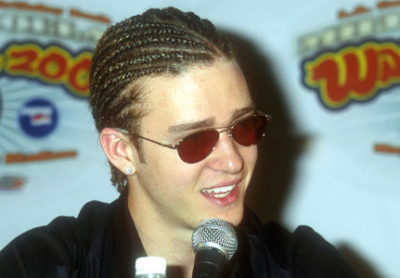
Like many young performers at the time, Justin Timberlake first appeared on the TV show Star Search. Back then, the 11-year-old from Memphis played country music under the name Justin Randall.
Though he didn’t win Star Search, his appearance there helped Justin Timberlake land a spot on the childrens’ variety show Mickey Mouse Club in 1993. It was there that he first met Britney Spears and Christina Aguilera, as well as JC Chasez, whom Timberlake recruited into the newly forming boy band N’Sync. The band released its self-titled debut album in 1998, which sold 11 million copies and made Timberlake a 17-year-old superstar.
N’Sync soon became one of the most successful pop acts of the 1990s, with over 50 million total albums sold. Since the group broke up in 2002, Justin Timberlake has released four solo albums, three of which topped the Billboard 200 list. He has also starred in a number of movies, including the critically acclaimed films The Social Network and Inside Llewyn Davis, which is currently in theaters. The 20/20 Experience, which Timberlake released last March, was the bestselling album of 2013.
Britney Spears
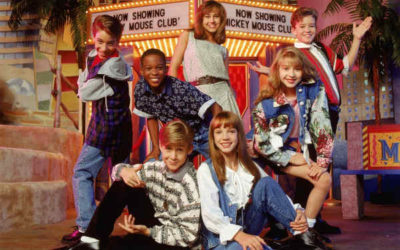
Born in 1981, Britney Spears started dance and voice lessons at the age of three and began performing publicly at the age of five. At 11, she joined the off-Broadway musical Ruthless as an understudy to the lead actress, who plays a child star. Like Justin Timberlake and many of her contemporaries, she auditioned for Star Search and joined the cast of The Mickey Mouse Club in 1992.
After the show ended in 1996, Britney returned to high school as a normal student–but only temporarily. In 1997 she joined the female pop group Innosense. Shortly after that, she recorded her first solo album, Baby One More Time, which sold more than ten million copies within a year. Since then she’s sold more than 100 million albums, making her one of the bestselling artists of all time.
Like some current pop stars, Britney Spears ran into some controversy as she got older–if, by controversy you mean the kind of events worth stopping the news for because they involve a celebrity doing something brash. The height of this might have been the moment Britney Spears showed up at a hair salon and shaved most of her hair off, which became a perfect example of media obsession.
Beyoncé Knowles
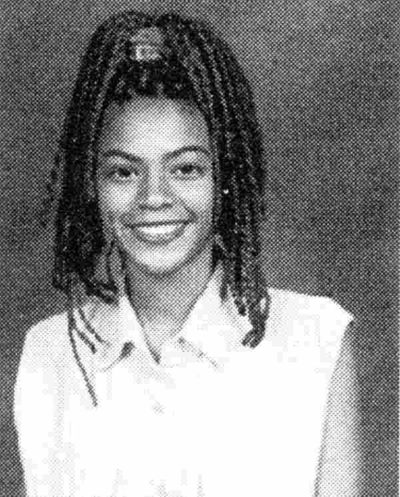
Beyoncé Knowles began taking dance lessons and singing back in elementary school. She won her school talent show at the age of seven, beating a number of teenagers in the process. Alongside childhood friends Kelly Rowland and LaTavia Roberson, she formed the girl group Girl’s Tyme at the age of eight and — big surprise — tried out for Star Search.
They didn’t win, but in 1996 they signed a deal with Columbia Records and changed the group’s name to — wait for it — Destiny’s Child. They began recording their debut album that year, when Beyoncé was 15. The group recorded several hits over the next few years, including the songs “Survivor” and “Say My Name”.
In recent years, Beyoncé has released a series of critically acclaimed solo albums, each more ambitious than the last. Last year she took the music world by complete surprise when she released her newest album, titled Beyoncé, without any prior announcement whatsoever. The album has sold three million copies so far.